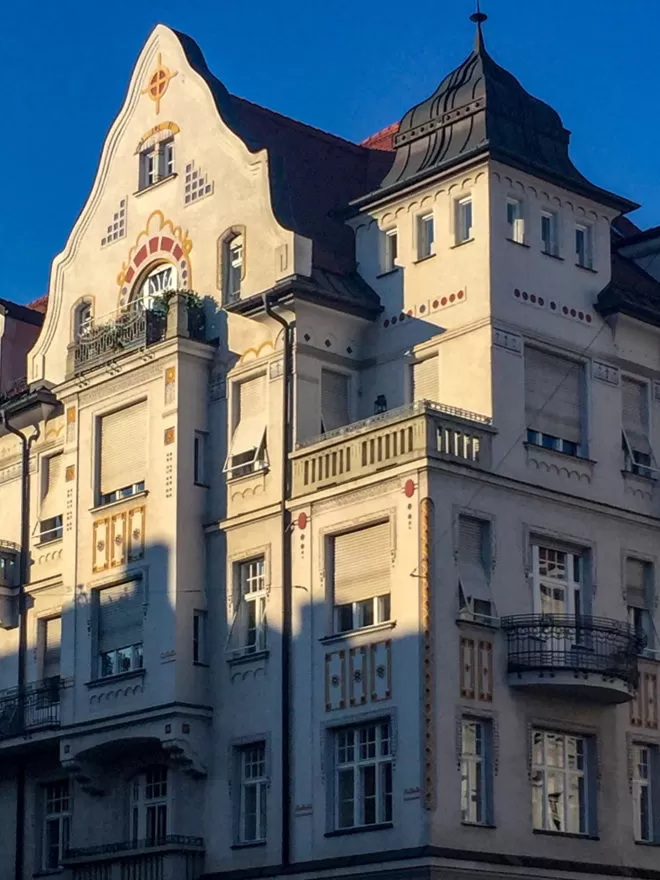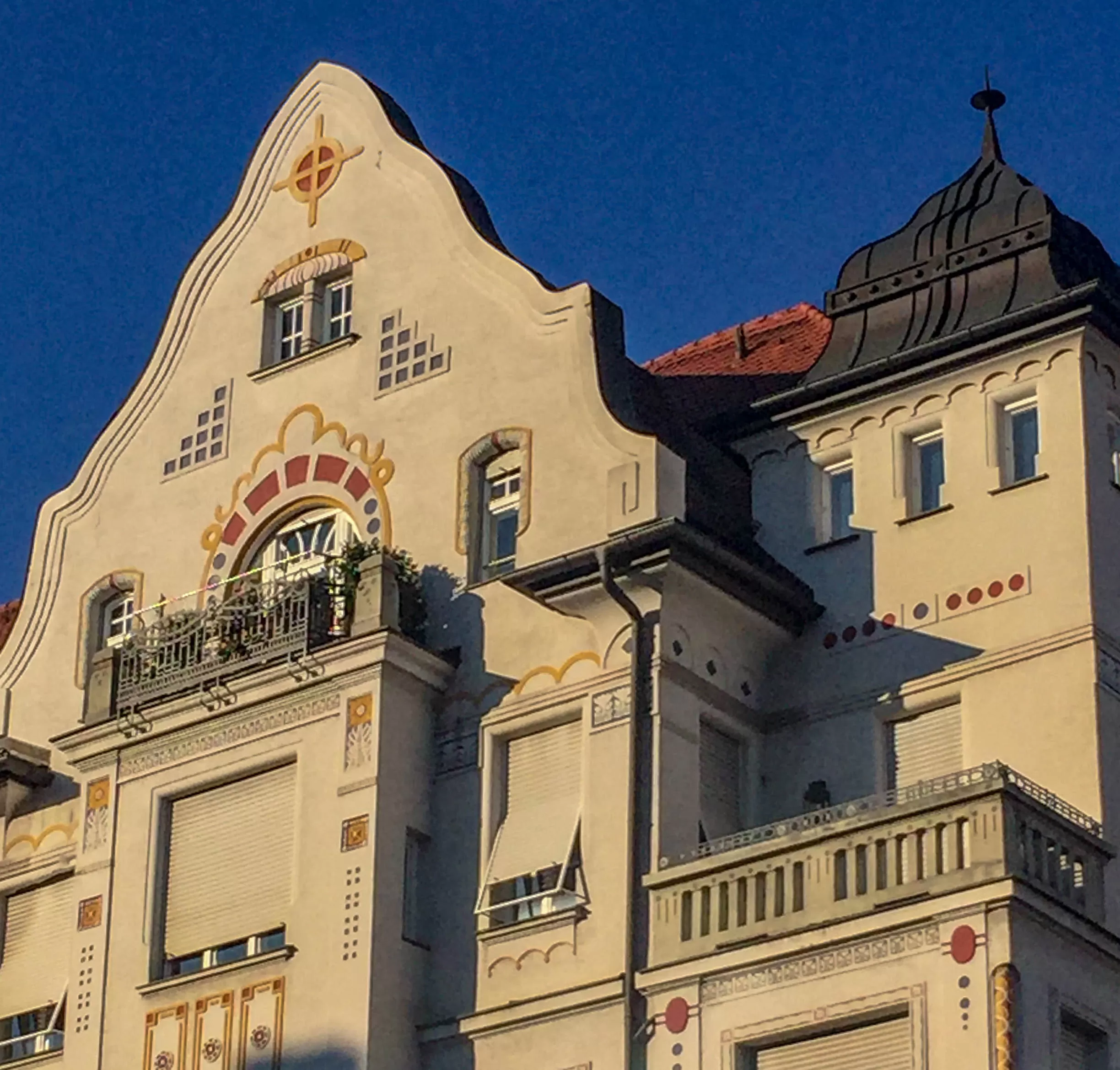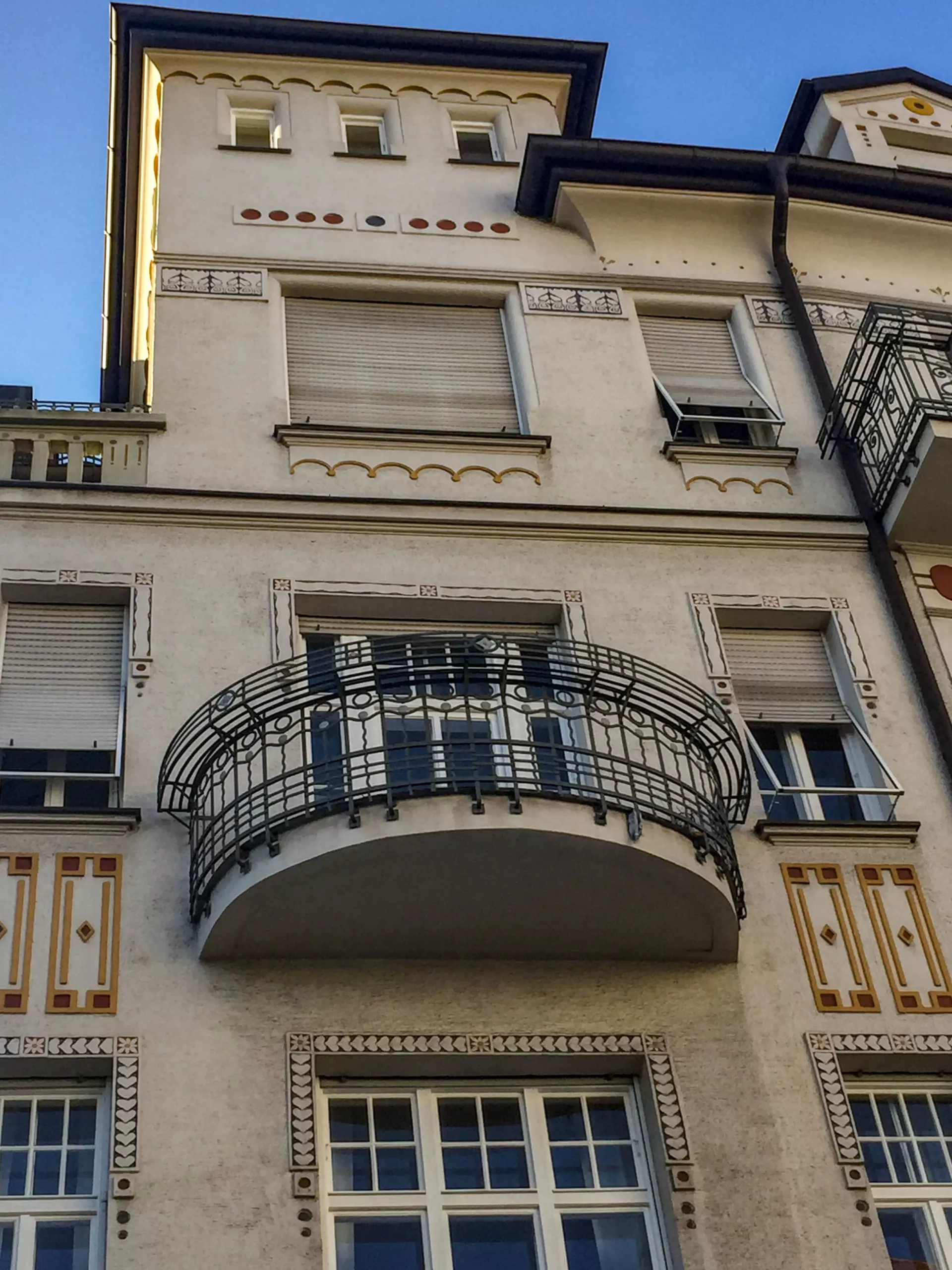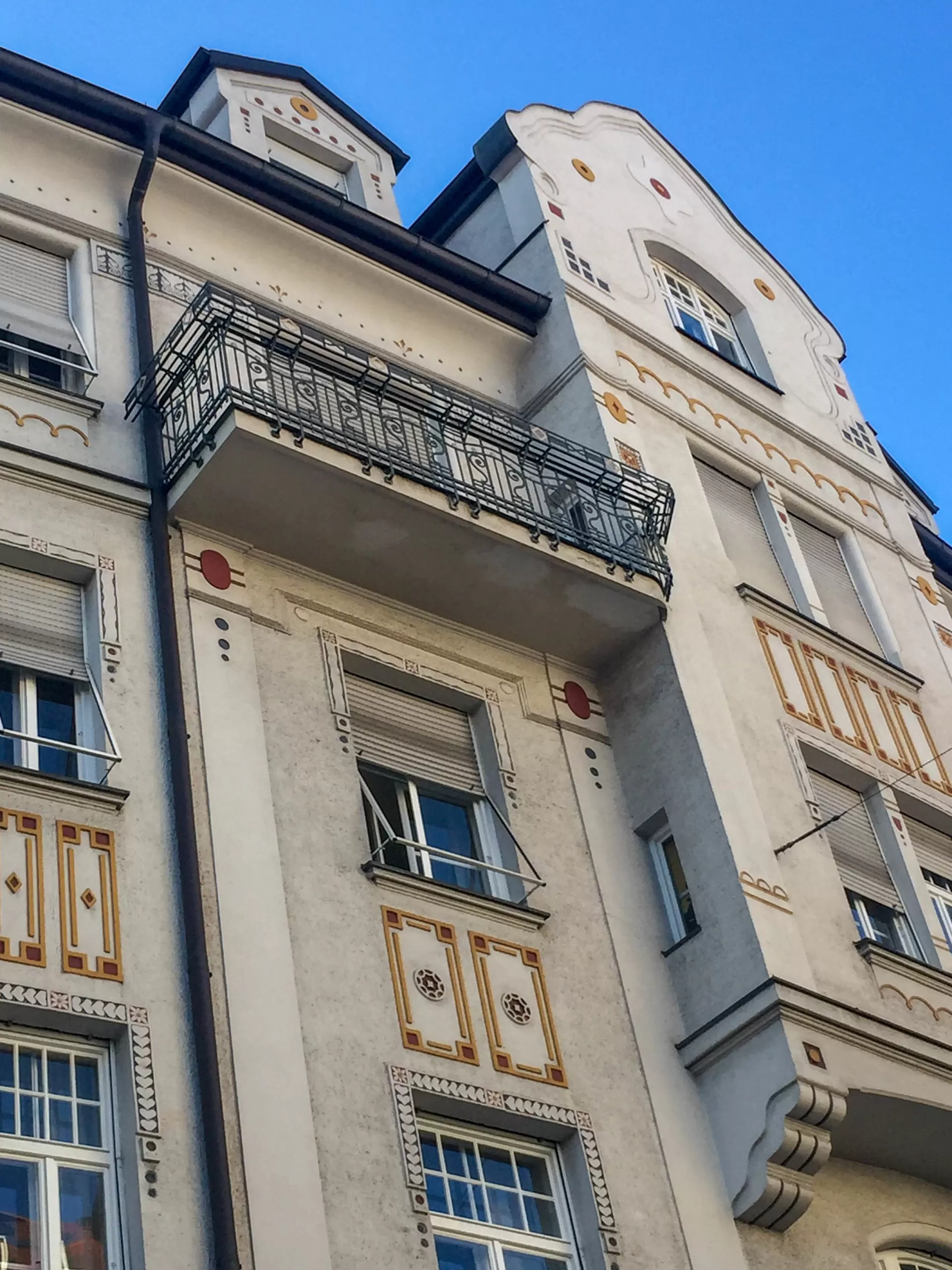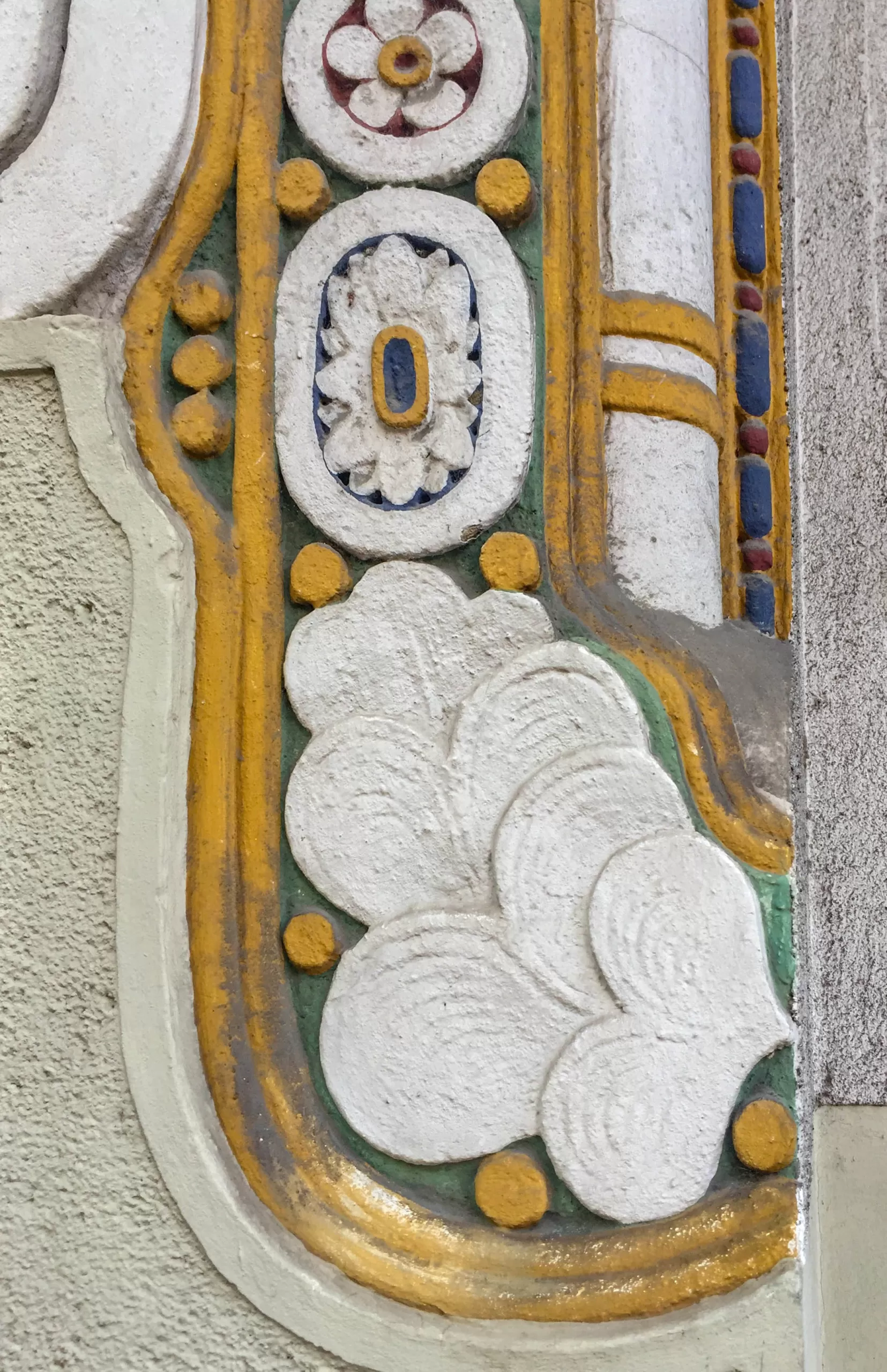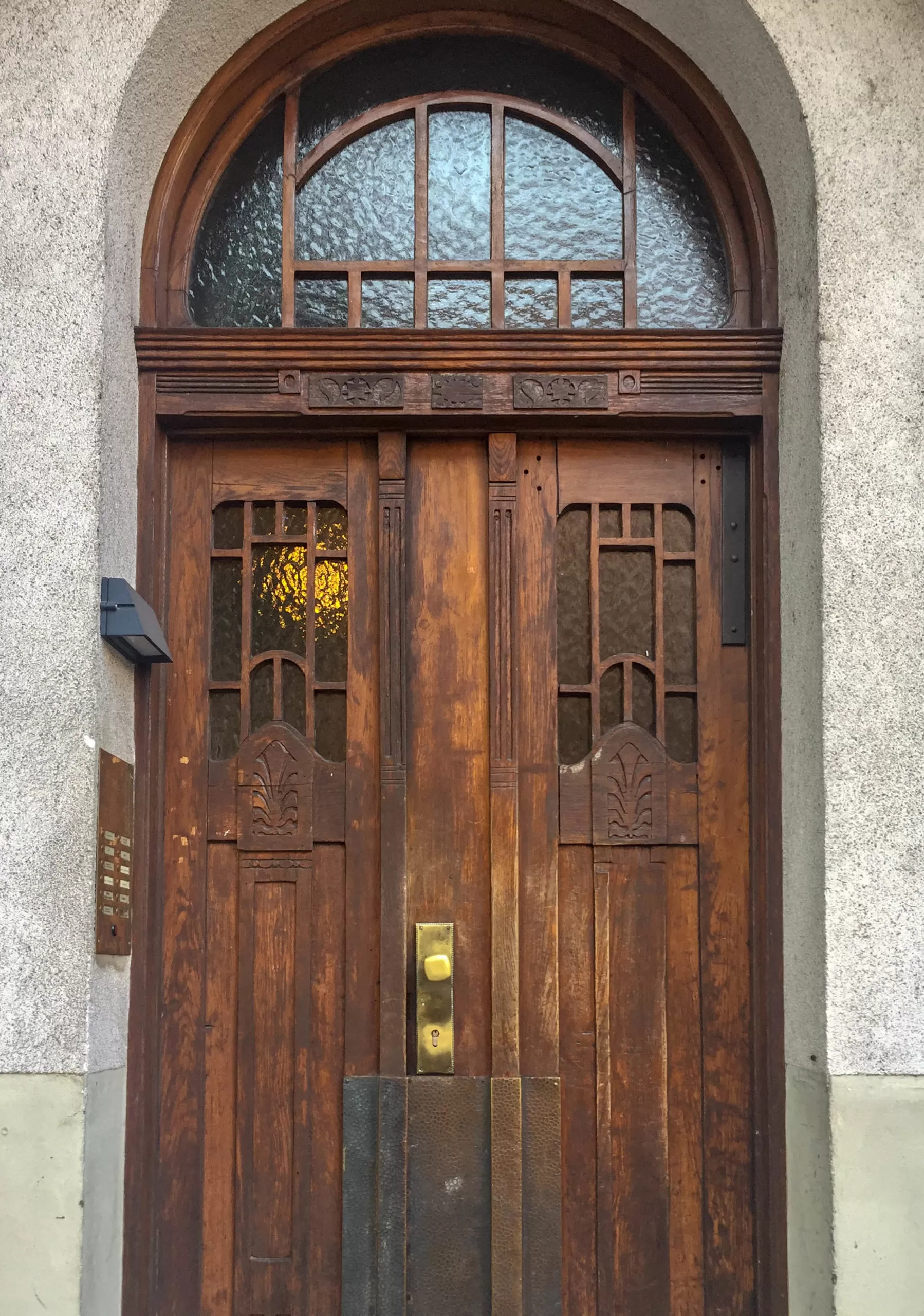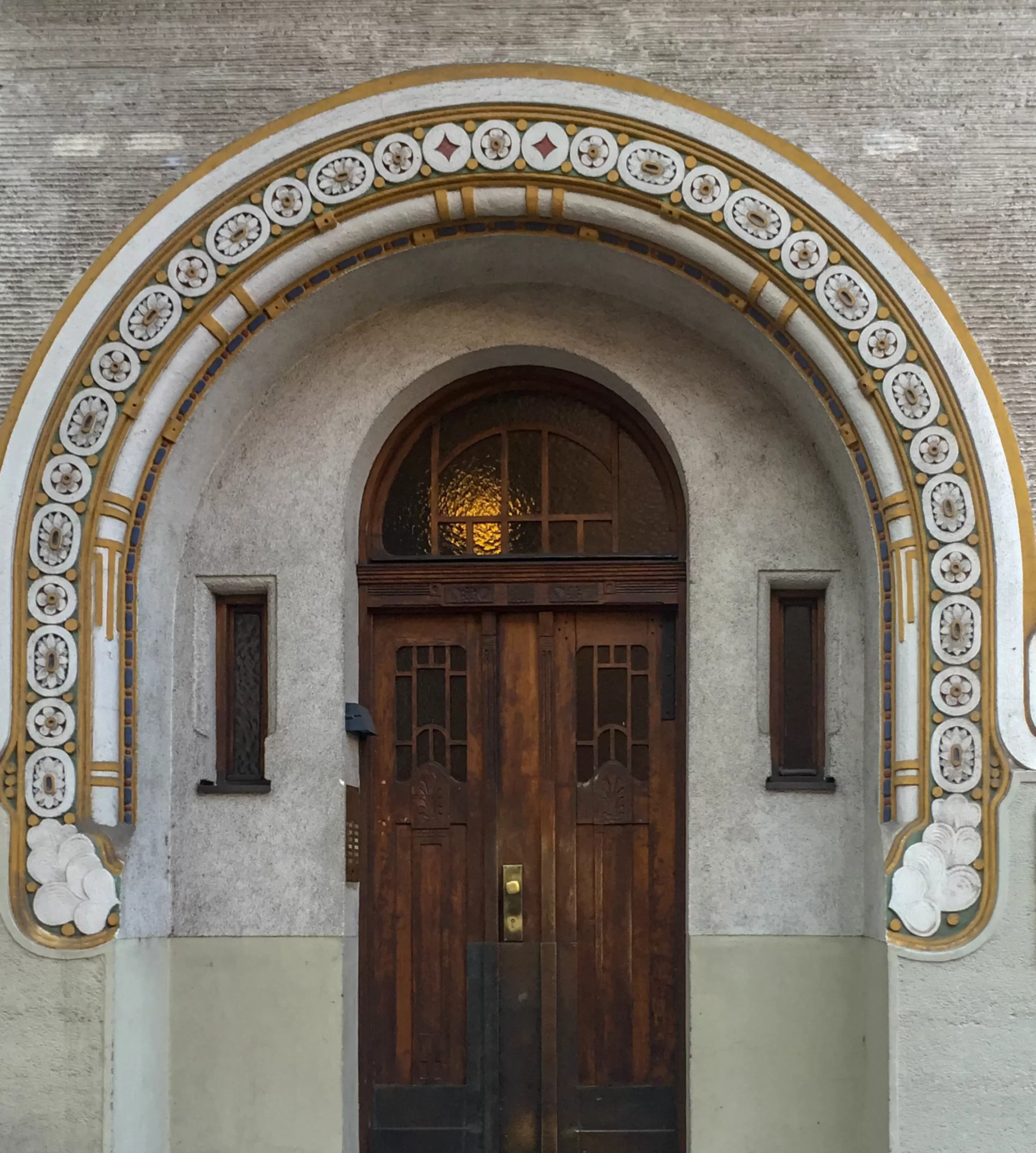1907
Architect: Jakob Bender
Elisabethstraße 34 – 38, Munich
In 1907, the apartment building on Elisabethstrasse in Munich-Schwabing was built according to plans by architect Jakob Bender.
For many years, the painter Karl Caspar lived on the fourth floor of house number 38.
Schwabing
In 1890, with the incorporation, a building boom had begun in Schwabing. Numerous new apartment buildings were built and the studio apartments on the top floors were attractive to artists.
The Academy of Art was nearby and numerous painting schools were located in Maxvorstadt, a neighboring neighborhood to the south of Schwabing.
Elisabethstrasse
Elisabethstrasse in Schwabing was named after Empress Elisabeth of Austria in 1898. She was the daughter of Duke Max in Bavaria and mother of Gisela (the wife of Prince Leopold) and cousin of King Ludwig II.
Elisabeth was married to Emperor Franz Joseph I, after whom Franz-Joseph-Strasse in Schwabing had been named since 1894.
The couple often stayed with relatives in Schwabing, both at Palais Leopold and at nearby Biederstein Palace.
Writers and Artists
Literary figures and poets such as Frank Wedekind, Lion Feuchtwanger, Erich Mühsam, Stefan George and Oskar Maria Graf left their mark on the neighborhood.
In addition, there were painters around the artists’ association Der Blaue Reiter, which included Wassily Kandinsky, Franz Marc, Paul Klee, Gabriele Münter and Marianne von Werefkin.
Simplicissimus and Jugend
In 1896, two influential magazines were launched – Simplicissimus and Jugend, which gave its name to the art movement of Jugendstil.
Wahnmoching
Countess Franziska zu Reventlow, who had thrown in the towel with her aristocratic family and led an unconventional life in Munich as the Countess of Schwabing, created a literary monument to the artistic scene in the novel Herr Dames Aufzeichnungen oder Begebenheiten aus einem merkwürdigen Stadtteil.
She invented the nickname Wahnmoching for Schwabing, which took into account both Schwabing’s village-like and idealistic character.
Building
All of the design elements typical of Art Nouveau are present in the apartment building on Elisabethstrasse: colorful geometric and floral forms in the facade decoration, ornate gables, oriels, balconies, and a tower-like raised corner design.
The rich geometric shapes and floral motifs can be found on the facade as well as on the wrought iron balcony grilles.
The building is a listed building and received the facade award of the city of Munich in 1990.

